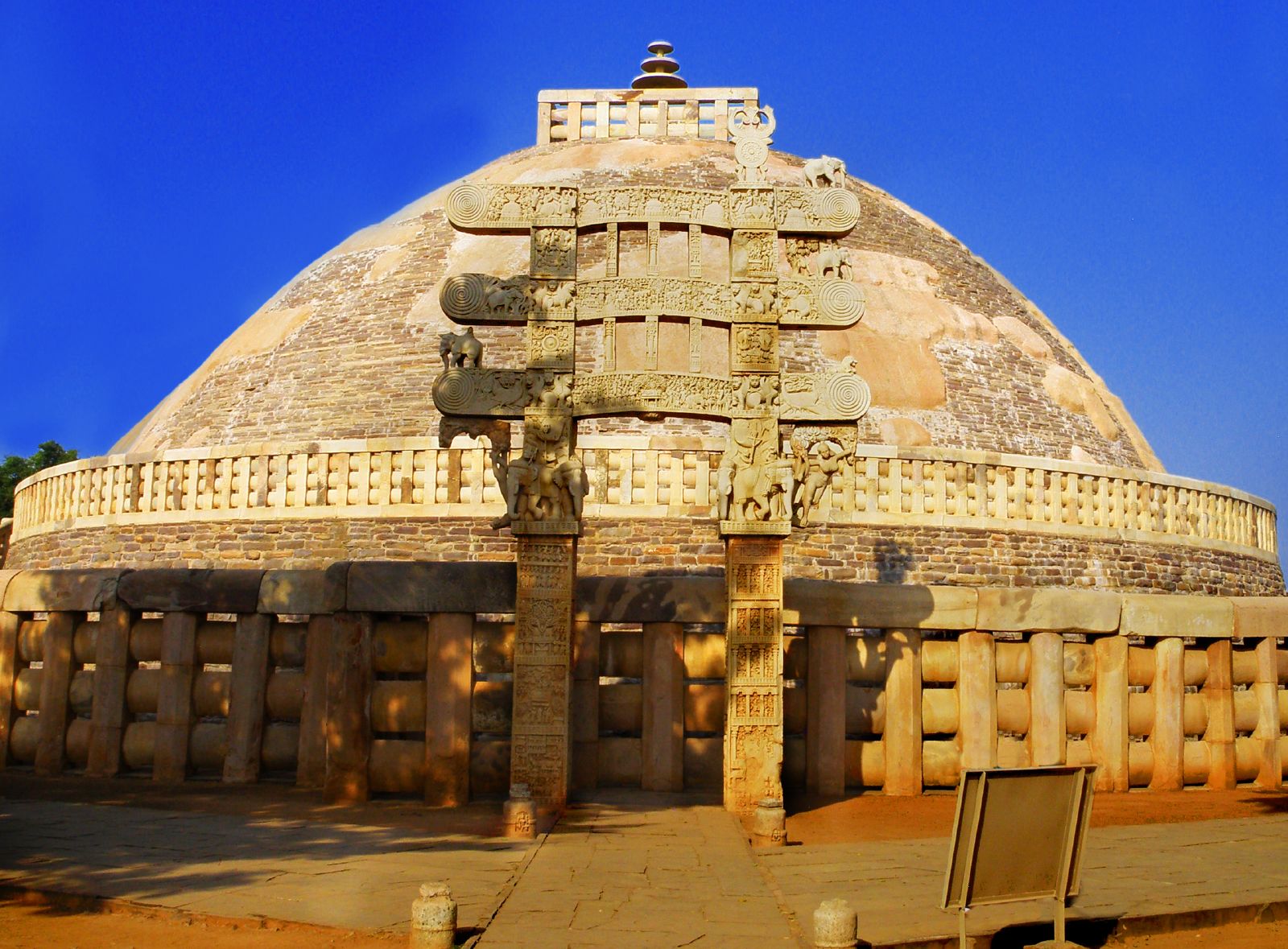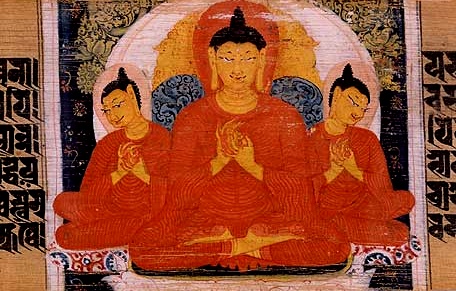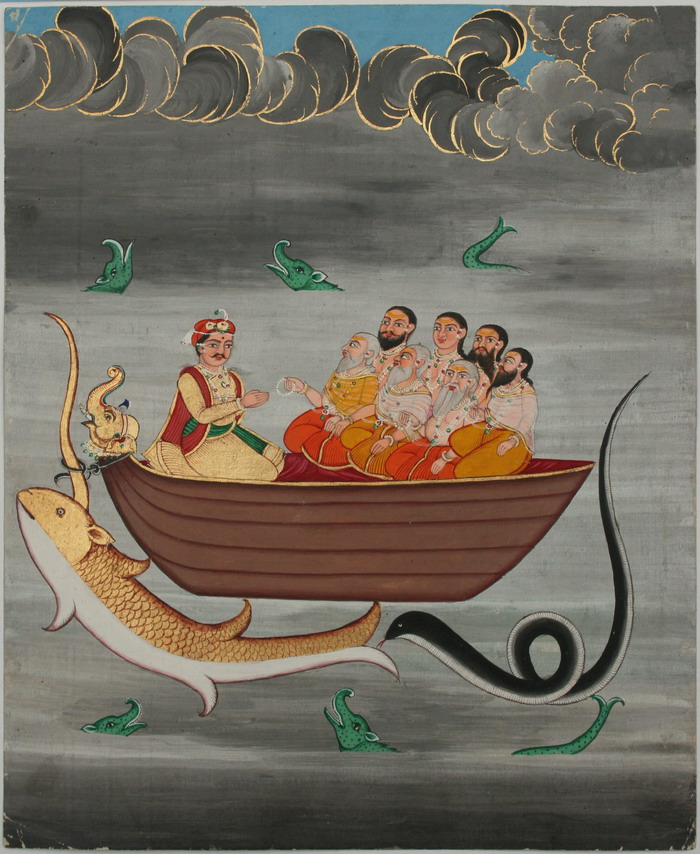|
Asita
Asita or Kaladevala or Kanhasiri was a hermit ascetic depicted in Buddhist sources as having lived in ancient India. He was a teacher and advisor of Suddhodana, the father of the Buddha, and is best known for having predicted that prince Siddhartha of Kapilavastu would either become a great chakravartin or become a supreme religious leader; Siddhartha was later known as Gautama Buddha. The name Asita literally means 'not clinging' while Kanhasiri means 'dark splendour'. Asita is described as a '' tāpasa'', a practitioner of asceticism. Biography The Theravada tradition depicts Asita as an advisor and chaplain to Sihahanu, the grandfather of Gotama Buddha. He was the teacher of Suddhodana, and then served him as he had his father. At the time of the birth of the Buddha, he had retired by permission of Suddhodana and was living in the forest as an ascetic. A vision alerted Asita of the birth of the Bodhisattva Gotama, causing him to leave the forest and travel to see the in ... [...More Info...] [...Related Items...] OR: [Wikipedia] [Google] [Baidu] |
Gautama Buddha
Siddhartha Gautama, most commonly referred to as the Buddha, was a wandering ascetic and religious teacher who lived in South Asia during the 6th or 5th century BCE and founded Buddhism. According to Buddhist tradition, he was born in Lumbini, in what is now Nepal, to royal parents of the Shakya clan, but renounced his home life to live as a wandering ascetic ( sa, śramaṇa). After leading a life of begging, asceticism, and meditation, he attained enlightenment at Bodh Gaya in what is now India. The Buddha thereafter wandered through the lower Indo-Gangetic Plain, teaching and building a monastic order. He taught a Middle Way between sensual indulgence and severe asceticism, leading to Nirvana, that is, freedom from ignorance, craving, rebirth, and suffering. His teachings are summarized in the Noble Eightfold Path, a training of the mind that includes meditation and instruction in Buddhist ethics such as right effort, mindfulness, and '' jhana''. He di ... [...More Info...] [...Related Items...] OR: [Wikipedia] [Google] [Baidu] |
Gotama Buddha
Siddhartha Gautama, most commonly referred to as the Buddha, was a wandering ascetic and religious teacher who lived in South Asia during the 6th or 5th century BCE and founded Buddhism. According to Buddhist tradition, he was born in Lumbini, in what is now Nepal, to royal parents of the Shakya clan, but renounced his home life to live as a wandering ascetic ( sa, śramaṇa). After leading a life of begging, asceticism, and meditation, he attained enlightenment at Bodh Gaya in what is now India. The Buddha thereafter wandered through the lower Indo-Gangetic Plain, teaching and building a monastic order. He taught a Middle Way between sensual indulgence and severe asceticism, leading to Nirvana, that is, freedom from ignorance, craving, rebirth, and suffering. His teachings are summarized in the Noble Eightfold Path, a training of the mind that includes meditation and instruction in Buddhist ethics such as right effort, mindfulness, and ''jhana''. He died in Kushi ... [...More Info...] [...Related Items...] OR: [Wikipedia] [Google] [Baidu] |
Gandhara
Gandhāra is the name of an ancient region located in the northwestern region of the Indian subcontinent, more precisely in present-day north-west Pakistan and parts of south-east Afghanistan. The region centered around the Peshawar Valley and Swat river valley, though the cultural influence of "Greater Gandhara" extended across the Indus river to the Taxila region in Potohar Plateau and westwards into the Kabul Valley in Afghanistan, and northwards up to the Karakoram range. Gandhara has a deep rooted history of Hinduism mentioned in Indian scripts and epics including Rig Veda, Ramayana and Mahabharata. Famed for its unique Gandharan style of art which is influenced by the classical Hellenistic styles, Gandhara attained its height from the 1st century to the 5th century CE under the Kushan Empire, who had their capital at Peshawar (''Puruṣapura''). Gandhara "flourished at the crossroads of India, Central Asia, and the Middle East," connecting trade routes and absor ... [...More Info...] [...Related Items...] OR: [Wikipedia] [Google] [Baidu] |
Chakravartin
A ''chakravarti'' ( sa, चक्रवर्तिन्, ''cakravartin''; pi, cakkavatti; zh, 轉輪王, ''Zhuǎnlúnwáng'', "Wheel-Turning King"; , ''Zhuǎnlún Shèngwáng'', "Wheel-Turning Sacred King"; ja, 転輪王, ''Tenrin'ō'' or , ''Tenrinjōō'') is an ideal (or idealized) universal ruler, in Indian history, the history, Dharmic religion, religion, and mythologies of India. The concept is present in the cultural traditions Vedic mythology, of Vedic, Hindu mythology, Hindu, Jainism, Jain and Buddhist mythology, Buddhist narrative myths and lore. There are three types of chakravarti: ''chakravala chakravarti'', a king who rules over all four of the continents (i.e., a universal monarch); ''dvipa chakravarti'', a ruler who governs only one of those continents; and ''pradesha chakravarti'', a monarch who leads the people of only a part of a continent, the equivalent of a local king. Dvipa chakravarti is particularly one who rules the entire Indian subcontinent (as ... [...More Info...] [...Related Items...] OR: [Wikipedia] [Google] [Baidu] |
History Of Buddhism In India
Buddhism is an ancient Indian religion, which arose in and around the ancient Kingdom of Magadha (now in Bihar, India), and is based on the teachings of Gautama Buddha who was deemed a "Buddha" ("Awakened One"), although Buddhist doctrine holds that there were other Buddhas before him. Buddhism spread outside of Magadha starting in the Buddha's lifetime. During the reign of the Buddhist Mauryan Emperor Ashoka, the Buddhist community split into two branches: the Mahāsāṃghika and the Sthaviravāda, each of which spread throughout India and split into numerous sub-sects. In modern times, two major branches of Buddhism exist: the Theravada in Sri Lanka and Southeast Asia, and the Mahayana throughout the Himalayas and East Asia. The Buddhist tradition of Vajrayana is sometimes classified as a part of Mahayana Buddhism, but some scholars consider it to be a different branch altogether. The practice of Buddhism lost influence in India around the 7th century CE, after the co ... [...More Info...] [...Related Items...] OR: [Wikipedia] [Google] [Baidu] |
Simeon (Gospel Of Luke)
Simeon ( el, Συμεών) at the Temple is the "just and devout" man of Jerusalem who, according to , met Mary, Joseph, and Jesus as they entered the Temple to fulfill the requirements of the Law of Moses on the 40th day from Jesus' birth, i. e. the presentation of Jesus at the Temple. According to the Biblical account, the Holy Spirit visited Simeon and revealed to him that he would not die until he had seen the Christ of God. Upon taking Jesus into his arms, he uttered a prayer which is still used liturgically as the Latin in the Catholic Church and other Christian churches, and gave a prophecy alluding to the Crucifixion of Jesus. Some Christian traditions commemorate this meeting on 2 February as the feast of Candlemas, or, more formally, the Presentation of the Lord, the Meeting of the Lord, or the Purification of the Virgin (Mary). His prophecy is involved in the devotion to Mary as Our Lady of Sorrows. Simeon is venerated as a saint in the Catholic Church, Eastern Or ... [...More Info...] [...Related Items...] OR: [Wikipedia] [Google] [Baidu] |
Sikkhi Buddha
Sikhism (), also known as Sikhi ( pa, ਸਿੱਖੀ ', , from pa, ਸਿੱਖ, lit=disciple', 'seeker', or 'learner, translit=Sikh, label=none),''Sikhism'' (commonly known as ''Sikhī'') originated from the word ''Sikh'', which comes from the Sanskrit root ' meaning "disciple", or ' meaning "instruction". Singh, Khushwant. 2006. ''The Illustrated History of the Sikhs''. Oxford University Press. . p. 15.Kosh, Gur Shabad Ratnakar Mahan. https://web.archive.org/web/20050318143533/http://www.ik13.com/online_library.htm is an Indian religion that originated in the Punjab region of the Indian subcontinent,"Hinduism, Buddhism, Jainism and Sikh originated in India." around the end of the 15th century CE. It is the most recently founded major organized faith and stands at fifth-largest worldwide, with about 25–30 million adherents (known as Sikhs) .McLeod, William Hewat. 2019 998 Sikhism developed from the spiritual teachings of Guru Nanak (1469–1539), the faith's first gur ... [...More Info...] [...Related Items...] OR: [Wikipedia] [Google] [Baidu] |
Pali
Pali () is a Middle Indo-Aryan liturgical language native to the Indian subcontinent. It is widely studied because it is the language of the Buddhist ''Pāli Canon'' or ''Tipiṭaka'' as well as the sacred language of ''Theravāda'' Buddhism.Stargardt, Janice. ''Tracing Thoughts Through Things: The Oldest Pali Texts and the Early Buddhist Archaeology of India and Burma.'', Royal Netherlands Academy of Arts and Sciences, 2000, page 25. Early in the language's history, it was written in the Brahmi script. Origin and development Etymology The word 'Pali' is used as a name for the language of the Theravada canon. The word seems to have its origins in commentarial traditions, wherein the (in the sense of the line of original text quoted) was distinguished from the commentary or vernacular translation that followed it in the manuscript. K. R. Norman suggests that its emergence was based on a misunderstanding of the compound , with being interpreted as the name of a particular ... [...More Info...] [...Related Items...] OR: [Wikipedia] [Google] [Baidu] |
Iddhi
''Iddhi'' (Pali; Sanskrit: ''rddhi'') in Buddhism refers to "psychic powers", one of the six supranormal powers (''abhijñā'') attained by advanced meditation through the four ''dhyānas''. The main sense of the word seems to be "potency". List of iddhi powers According to Bowker, there are eight ''iddhi'' powers: # Replicate and project bodily images of oneself, # Make oneself invisible, # Pass through solid objects, # Sink into solid ground, # Walk on water, # Fly, # Touch the sun and moon with one's hand, # Ascend to the world of the god Brahmā in the highest heavens According to the Iddhipada-vibhanga Sutta (SN 51.20) # Having been one he becomes many; having been many he becomes one. # He appears. He vanishes. # He goes unimpeded through walls, ramparts, & mountains as if through space. # He dives in and out of the earth as if it were water. # He walks on water without sinking as if it were dry land. # Sitting crosslegged he flies through the air like a winge ... [...More Info...] [...Related Items...] OR: [Wikipedia] [Google] [Baidu] |
Lalitavistara Sūtra
The ''Lalitavistara Sūtra'' is a Sanskrit Mahayana sutras, Mahayana Buddhist sutra that tells the story of Gautama Buddha from the time of his descent from Tushita until his first sermon in the Deer Park at Sarnath near Varanasi. The term ''Lalitavistara'' has been translated "The Play in Full" or "Extensive Play," referring to the Mahayana view that the Buddha's last incarnation was a "display" or "performance" given for the benefit of the beings in this world. Outline of the text The sutra consists of twenty-seven chapters: * Chapter 1: In the first chapter of the sutra, the Buddha is staying at Jetavana with a large gathering of disciples. One evening, a group of Deva (Buddhism), divine beings visit the Buddha and request him to tell the story of his awakening for the benefit of all beings. The Buddha consents. * Chapter 2: The following morning, the Buddha tells his story to the gathered disciples. He begins the story by telling of his previous life, in which the future B ... [...More Info...] [...Related Items...] OR: [Wikipedia] [Google] [Baidu] |
Rishi
''Rishi'' () is a term for an accomplished and enlightened person. They find mentions in various Vedic texts. Rishis are believed to have composed hymns of the Vedas. The Post-Vedic tradition of Hinduism regards the rishis as "great yogis" or "sages" who after intense meditation (tapas) realized the supreme truth and eternal knowledge, which they composed into hymns.Hartmut Scharfe (2002), Handbook of Oriental Studies, BRILL Academic, , pp. 13–15. The term appears in Pali literature as Ishi and in Buddhism, they can be either Buddhas, Paccekabuddhas, Arahats or a monk of high rank. Etymology According to Indian tradition, the word may be derived from two different meanings of the root 'rsh' (). Sanskrit grammarians derive this word from the second meaning: "to go, to move". V. S. Apte gives this particular meaning and derivation, and Monier-Williams also gives the same, with some qualification. Another form of this root means "to flow, to move near by flowing". (All the ... [...More Info...] [...Related Items...] OR: [Wikipedia] [Google] [Baidu] |
.jpg)








